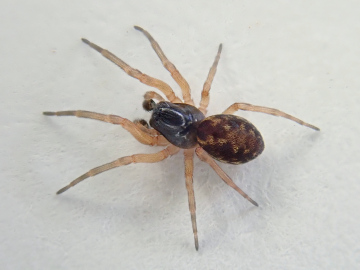Summary for Argenna patula (Araneae)
previous species | next species
National Distribution
Terms of Use. Double-click on map to go to region

Explore Regional Distribution
Please log on and add a note on this species
About this species
Recorded altitude range0m to 35m
Species text
DistributionCoastal from southwest Scotland southwards round to The Wash, but the majority of sites are in East Anglia and the Thames Estuary. The distribution is restricted by the number of suitable rivers, estuaries and saltmarshes. The species is widespread on the coasts of western Europe.
Habitat and ecology
Estuaries, saltmarsh. The spider occurs among strandline litter and under stones on the banks of tidal rivers or on estuaries and saltmarshes, and may be frequent where it occurs. Adults of both sexes are found in May and June, females until October.
Status
Apparently not scarce in suitable habitat, though limited by this.
Threats
Pollution on some rivers and the loss of saltmarsh to land reclamation may threaten the species at some sites. There has been a massive loss of saltmarsh on parts of the east coast where erosion has been attributed to relative sea level rise resulting from a combination of land falling following the retreat of the last Ice Age and sea rising due to global warming. In Essex typical losses of around 20% per estuary, with one site approaching 50%, have been reported over the fifteen-year period 1973-1988 and have continued unabated between 1988 and 1998.
Management and conservation
Retain strandline litter in soft-coast habitats. Managed realignment, including the controlled breaching of sea walls, may provide new areas of suitable habitat.
Text based on Dawson, I.K., Harvey, P.R., Merrett, P. & Russell-Smith, A.R. (in prep.). References
Adult Season
Habitats
background methodology
Recorded management for locations with Argenna patula
Recorded substrate and hydrology for locations with Argenna patula
Images
please log on and upload a new image for this speciesSee also A-Z Species Index - A-Z Picture Index - previous species | next species



